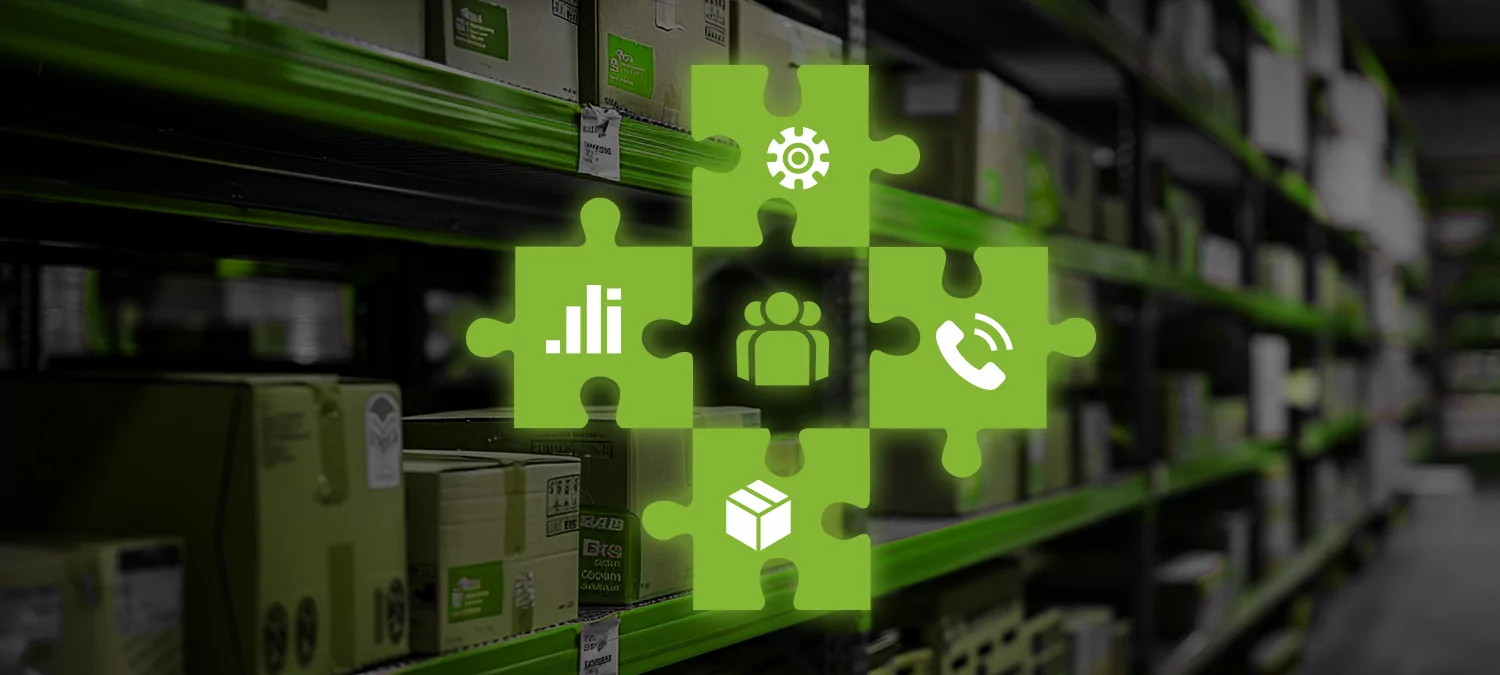In today’s world, retail is undergoing significant changes. With the advancement of technology and the increasing number of customer interaction channels, traditional sales methods no longer meet the needs of the modern consumer. Some prefer to shop through ecommerce platforms, while others look for products on social media. The more touchpoints you can offer a customer, the greater your chances of generating potential profit.
Omnichannel retail is gaining popularity, offering new opportunities for engaging with customers and creating a truly unique and convenient shopping experience.
In our article, we will give omnichannel retailing definition, discuss its benefits for modern businesses, and provide recommendations on how to implement omnichannel strategies in your business.
- Omnichannel Retailing Definition
- What is the difference between omnichannel and multichannel?
- The Importance of Omnichannel Retailing for Modern Business
- Challenges of Omnichannel Retail
- How to Implement an Omnichannel Retail Strategy?
- Conclusion: The Future of Omnichannel Retail
- Frequently Asked Questions
Omnichannel Retailing Definition
Omnichannel retail is a comprehensive approach to sales that integrates all available customer interaction channels into a cohesive whole. This means that customers can effortlessly switch between different purchasing methods while enjoying a unified and harmonious experience. The goal of an omnichannel strategy is to create a seamless and convenient experience for the customer, regardless of the way they choose to interact with the brand.
An important element of omnichannel commerce is the integration of all sales and communication channels. This involves synchronizing data on products, prices, and inventory to ensure that customers always have access to up-to-date information, regardless of how they make their purchase. For example, a customer might start browsing products on a website, continue on their mobile device, and complete the purchase in a physical store, or vice versa. This approach significantly enhances customer satisfaction and loyalty to the brand.
What is the difference between omnichannel and multichannel?
Omnichannel and multichannel are two conceptually distinct approaches in retail that are often confused with each other. The main difference between them lies in how customer interactions are organized across various channels.
The multichannel approach involves having several independent channels for sales and customer interaction. For example, a company might sell its products through an online store, physical stores, and social media. Each of these channels operates separately and is not necessarily connected to the others. This means that customers may have different shopping experiences depending on the channel they choose. If a customer starts a purchase online but wants to complete it in a physical store, they will likely have to start the process over again.
Omnichannel retail, on the other hand, aims to create a unified and seamless experience for the customer regardless of the chosen channel. In an omnichannel retail strategy, all channels are integrated and operate cohesively. For example, a customer might start searching for a product in a mobile app, continue browsing on a website, and complete the purchase in a physical store without losing data or progress. This approach creates a more personalized and convenient experience for the customer, which can increase loyalty and satisfaction.
Moreover, the omnichannel approach allows a company to collect and analyze data on customer behavior across all channels. This enables the company to better understand customer needs and offer more relevant products and services.
One could say that omnichannel retail represents a more advanced and integrated strategy compared to multichannel tactics. It allows for creating a more cohesive and convenient experience for customers.
The Importance of Omnichannel Retailing for Modern Business
In practice, omnichannel retail involves the integration of multiple channels, including websites, mobile apps, social media, physical stores, call centers, and other customer touchpoints. This approach enables retail companies to more effectively meet the needs of their customers by providing the flexibility to shop anywhere and anytime, while ensuring a consistent quality of service across all platforms.
To better understand the importance of omnichannel ecommerce, let’s look at the statistics:
✔ More than half of buyers interact with at least 4 touchpoints before making a purchase.
✔ Companies with an omnichannel retail strategy retain an average of 89% of their customers.
✔ Omnichannel customer engagement has allowed companies to increase their annual revenue by 9.5% compared to the previous year.
Statistics confirm that companies that were able to offer their customers an integrated and personalized experience gained significant advantages:
Improved the quality of customer service
Omnichannel retail provides a seamless and convenient shopping experience, which significantly enhances customer satisfaction. Shoppers can interact with the brand through various channels, choosing the methods that are most convenient for them. Research in omnichannel retail shows that companies with an omnichannel strategy have achieved 23 times higher levels of customer satisfaction.
Increased sales
Integrating various sales channels allows companies to expand their audience and offer customers more purchasing options. Customers can start a purchase in one channel and complete it in another, increasing the likelihood of closing the sale.
Optimized inventory management
Omnichannel platforms track inventory in real time and can offer customers alternative delivery or pickup options. This is especially important in the context of growing demand for fast and convenient delivery. Imagine finding the desired product online, but it’s out of stock. An omnichannel retail strategy can offer you the option to pick it up from the nearest store or place a pre-order with fast home delivery.
Enhanced personalization
Omnichannel retail offers companies unique opportunities for personalized service. By collecting data on customer behavior across various platforms, businesses can better understand their consumers’ needs and preferences, which helps in offering more relevant products and services. Personalized recommendations based on previous purchases or viewed products can significantly increase the likelihood of making a purchase.
Challenges of Omnichannel Retail
Omnichannel retail is effective when it comes to customer convenience. Customers value choice and ease, so brands that can offer these advantages are at an advantage. However, in practice, omnichannel retail is much more complex. Its implementation comes with certain challenges that you’ll need to overcome.
Challenges with restructuring existing processes
Traditional methods that retail companies have used for decades often prove insufficient for ensuring seamless interaction between different sales channels. This requires significant investments in staff training and process adaptation, which can be a major barrier for many businesses.
Financial investment in omnichannel platforms
Successful omnichannel retail requires the implementation and integration of modern technological solutions. This includes integration with various sales channels, platforms for inventory and logistics management, and analytical tools for data processing. Implementing these technologies demands significant financial and time investments, as well as the presence of qualified specialists for their setup and maintenance.
Inventory control across all sales points
Omnichannel retail involves having products available across different sales channels, such as physical stores, online stores, and various trading platforms. Managing inventory in such a system becomes a complex task, as it requires ensuring product availability in each channel and avoiding shortages or excess inventory. This demands coordination between different departments and the use of automated inventory management systems, which can be challenging and costly.
Logistical barriers
Coordinating the delivery of goods through various channels and ensuring efficient and reliable logistics is another challenge of omnichannel retail. Managing logistics in such a system involves route planning, coordinating shipments, tracking deliveries, and handling returns. This requires an effective logistics infrastructure that supports fast and flexible delivery, as well as integration with logistics partners. Errors in logistics management can lead to delays, increased costs, and customer dissatisfaction.
Successfully overcoming these challenges requires a comprehensive approach, strategic planning, and readiness for change. However, with proper organization, all these efforts are well worth it due to the expanded reach and customer engagement, as well as increased sales.
How to Implement an Omnichannel Retail Strategy?
Implementing omnichannel retail requires careful planning and integration of various aspects of the business. Here are the key steps to successfully incorporate omnichannel strategies into your company:
1. Segment your customers
Segmentation allows you to more accurately identify the needs and preferences of different customer groups. It can be based on various criteria, such as demographics, behavioral characteristics, or purchasing preferences. This enables you to provide a personalized approach to each customer and increase their satisfaction.
2. Analyze which sales channel each customer segment uses
Some customers may prefer shopping through online stores, while others might visit physical stores or use mobile apps. Understanding these preferences will help you optimize your resources and focus efforts on the channels that are most popular among specific customer groups.
3. Choose omnichannel retail software
To successfully implement an omnichannel strategy, you need to synchronize all data in one place. Choose and deploy software solutions that help integrate various sales channels, ensuring consistency of information and processes. This will allow your customers to start a purchase in one channel and complete it in another without data loss or inconvenience.
4. Create consistent branding across all channels
All channels should convey a unified message and maintain a consistent style of communication with customers. This will create a sense of coherence and consistency, reinforcing trust in the brand. It is also important to consider cultural and linguistic nuances in different markets to tailor messages to their specific needs.
5. Analyze and improve your omnichannel strategies
It’s important to regularly review and update your strategies. Consumer behavior is constantly changing, and what worked yesterday might be ineffective today. Regularly analyzing data and adjusting your strategy will help you remain flexible and adapt to new market conditions.
Conclusion: The Future of Omnichannel Retail
Omnichannel retail has radically transformed the future of shopping by providing consumers with new opportunities and enhancing their experience. Whereas shoppers were once limited to physical stores and traditional purchasing methods, omnichannel strategies now enable the combination of online and offline platforms. Today, you can start searching for products online, read reviews, compare prices, and then visit a store to personally assess quality and make a purchase. This approach not only simplifies the selection and buying process but also offers greater freedom and convenience.
This is not just a trend but a necessity for successful business operations in the era of global digital transformation. However, implementing omnichannel retail is challenging without technological integrations. Ysell.pro offers comprehensive solutions for automating and integrating retail processes. The platform allows you to unify all sales channels into a single system and provide a seamless and convenient experience for customers. You can synchronize all your warehouses and sales points, and manage order and customer data from a single account. Additionally, Ysell.pro provides analytical tools to monitor the performance of all sales channels, helping you make informed decisions and enhance business profitability.
Companies that are ready to embrace the challenges and leverage the opportunities of omnichannel retail will not only enhance the customer experience but also significantly boost their efficiency and competitiveness in the market.
Frequently Asked Questions
1. What is omnichannel retail?
Omnichannel retail is a strategy that integrates various sales and customer interaction channels into a unified, cohesive system. This ensures a continuous and consistent shopping experience for customers, regardless of which channel they use to interact with the brand.
2. How do omnichannel selling and multichannel selling differ?
Multichannel retail uses several independent channels to interact with customers, whereas omnichannel retail integrates these channels to create a unified and seamless experience.
3. Do I need investments to implement an omnichannel strategy?
Yes, implementing omnichannel retail requires investment in technological infrastructure. The cost will depend on the omnichannel ecommerce software you choose. Ysell.pro offers a flexible cost structure, allowing you to adjust the pricing according to your business needs.
4. What technologies are needed to implement omnichannel retail?
To implement omnichannel retail, you’ll need software that integrates all customer touchpoints into a unified system. This may include CRM systems, content management platforms, and analytical tools for tracking customer behavior. Ysell.pro is a comprehensive solution that enables you to manage all your channels for communication, service, and sales from a single account.







